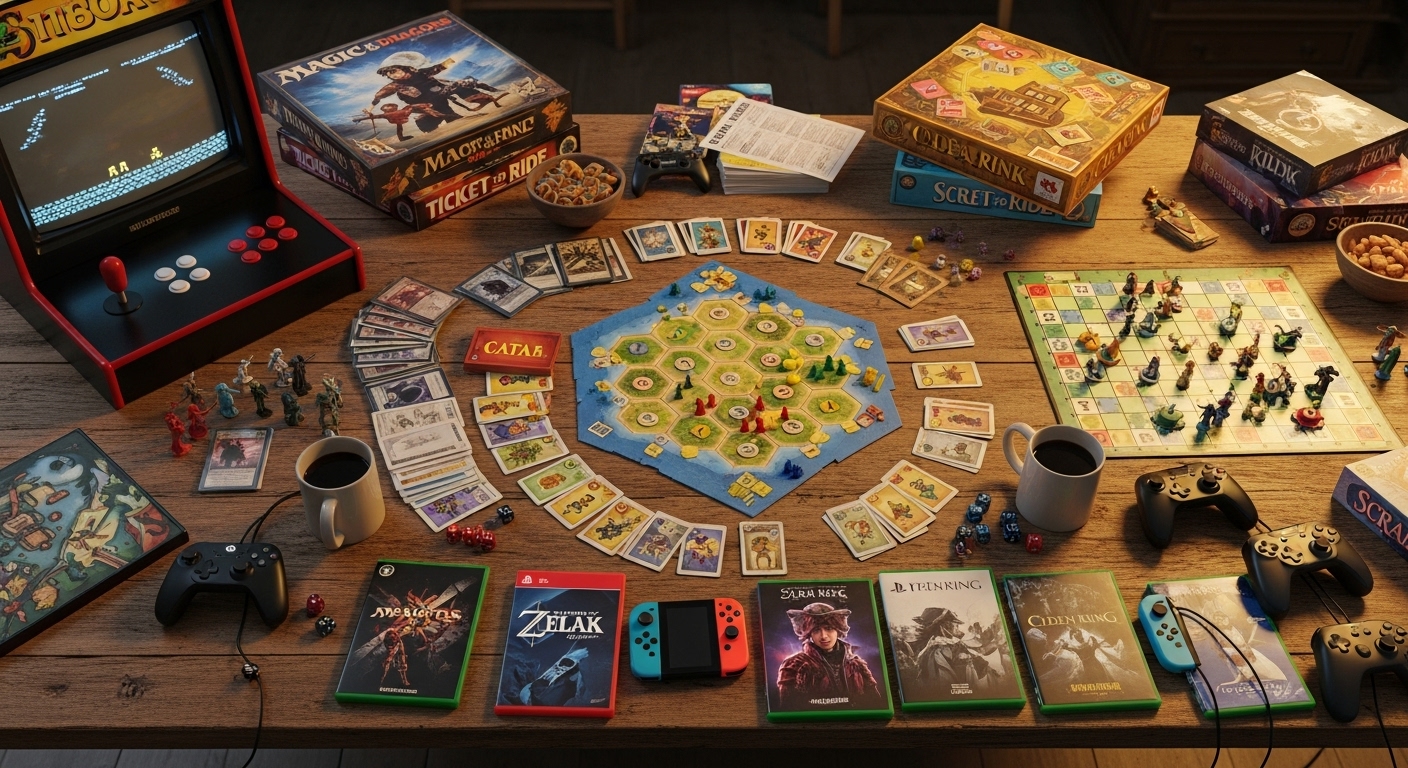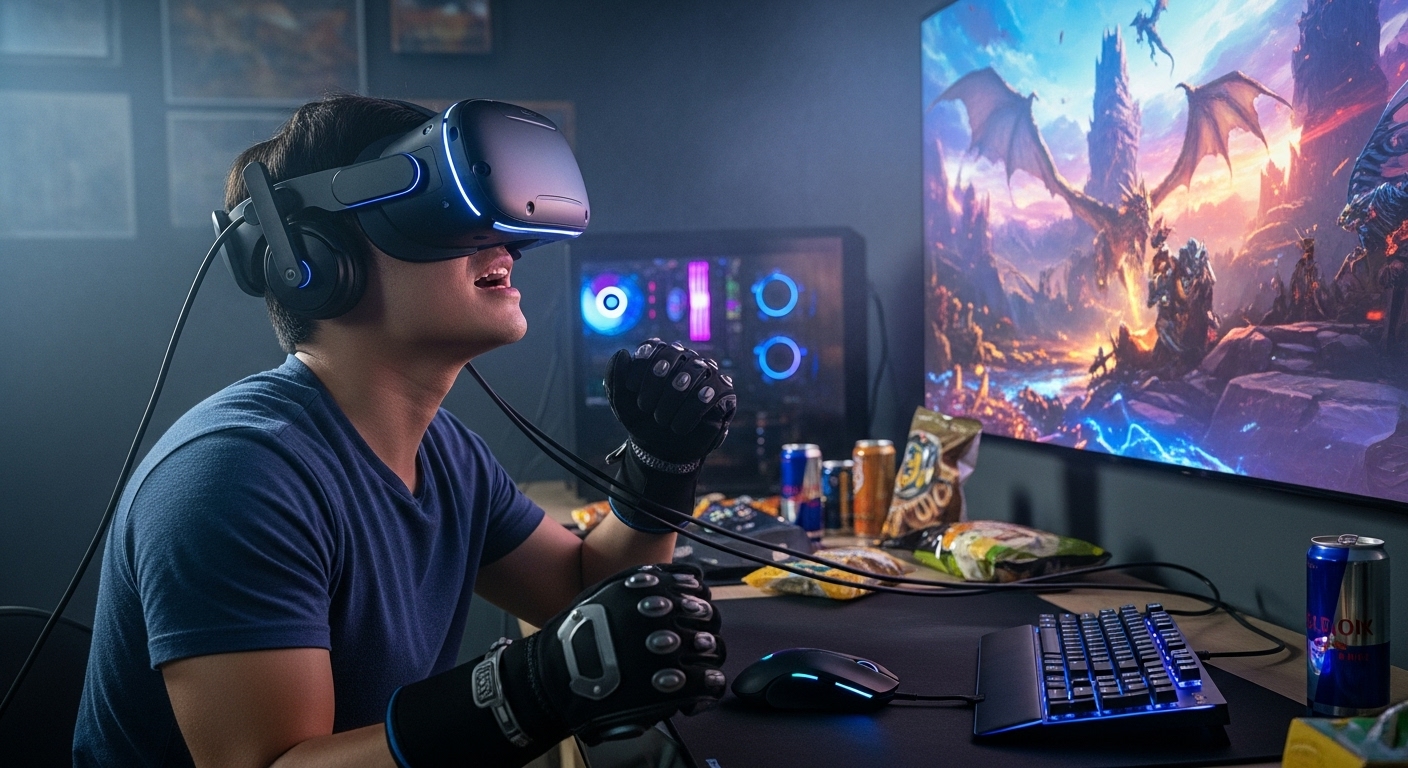Gaming has grown from a niche hobby enjoyed by a small group of enthusiasts into one of the largest and most influential entertainment industries in the world. What started as simple pixelated experiences on arcade machines has evolved into complex, immersive worlds that connect millions of players across the globe. Today, gaming is not only a form of entertainment but also a social, cultural, and economic powerhouse. This blog explores the fascinating journey of gaming—from its humble beginnings to its current dominance—while examining the technology, creativity, and community that make it one of the defining aspects of modern culture.
The Origins of Video Games
The story of gaming begins in the 1950s and 1960s when scientists and engineers experimented with early computer systems. The first recognizable video game, “Tennis for Two,” was created in 1958 by physicist William Higinbotham. It was a simple simulation of tennis displayed on an oscilloscope, but it represented a revolutionary idea—the use of computers for fun and interaction.
A few years later, “Spacewar!” emerged at the Massachusetts Institute of Technology, marking one of the earliest known multiplayer video games. These innovations inspired the development of arcade machines and home consoles in the 1970s, which brought gaming to the public. Games like “Pong,” “Space Invaders,” and “Pac-Man” defined this early era, captivating audiences with their simplicity and competitive spirit.
The rise of arcade culture transformed gaming into a social experience. Arcades became gathering places for young people to test their skills, share strategies, and enjoy a sense of community. The groundwork for gaming’s global appeal was being laid, even in its earliest stages.
The Golden Age of Consoles
The late 1970s and 1980s marked the birth of the console gaming era, with companies like Atari, Nintendo, and Sega leading the way. The release of the Atari 2600 brought video games into homes, allowing players to experience the joy of gaming beyond the arcade. However, the early gaming market soon became oversaturated, leading to the infamous video game crash of 1983.
Nintendo’s entry into the market revitalized the industry. The Nintendo Entertainment System (NES) introduced iconic franchises such as Super Mario Bros., The Legend of Zelda, and Metroid, which remain cultural landmarks today. Sega joined the competition with its own consoles and popular games, sparking one of the first great rivalries in gaming history.
This period also marked the introduction of handheld gaming with the release of the Game Boy. Portable consoles made gaming accessible anywhere, solidifying it as a mainstream form of entertainment. The golden age of consoles proved that video games were more than a passing trend—they were here to stay.
The Rise of 3D Graphics and Immersive Worlds
The 1990s ushered in a technological revolution that changed gaming forever. With the introduction of 3D graphics, developers gained the ability to create dynamic, immersive worlds that offered new levels of realism and interaction. Consoles like the Sony PlayStation, Nintendo 64, and Sega Saturn brought this technology into homes worldwide.
Games such as “Super Mario 64,” “Final Fantasy VII,” and “Tomb Raider” set new standards for storytelling, gameplay, and design. The rise of powerful consoles and computers allowed for cinematic experiences that blurred the line between films and games. Players could explore vast landscapes, solve complex puzzles, and experience emotional narratives that rivaled those of other art forms.
PC gaming also flourished during this time. Titles like “Doom,” “Quake,” and “StarCraft” showcased the power of online multiplayer gaming, connecting players across continents. The emergence of the internet as a gaming platform opened the door to global communities and competitive play.
Online Gaming and the Birth of Global Communities
The late 1990s and early 2000s marked the dawn of online gaming, a transformation that would redefine the industry. With the rise of broadband internet, players could now connect with others around the world, transforming gaming from a solitary experience into a shared one.
Massively Multiplayer Online Role-Playing Games (MMORPGs) like “EverQuest” and “World of Warcraft” allowed millions of players to explore virtual worlds together, forming friendships, alliances, and rivalries. Online shooters like “Counter-Strike” and “Call of Duty” introduced competitive multiplayer modes that would later give birth to professional gaming and eSports.
Online gaming also fostered the rise of social interaction in digital spaces. Gamers could communicate via chat, form clans, and participate in global tournaments. These experiences created tight-knit communities and transformed gaming into a social network before social media even existed.
The Mobile Gaming Revolution
The late 2000s brought another wave of transformation with the rise of mobile gaming. The introduction of smartphones made games accessible to billions of people worldwide. Titles like “Angry Birds,” “Candy Crush,” and “Clash of Clans” demonstrated that gaming was no longer limited to consoles or PCs—it was for everyone.
Mobile games appealed to both casual and hardcore players, offering quick and entertaining experiences that fit into daily life. The app store model allowed independent developers to reach massive audiences, leading to an explosion of creativity and innovation in the gaming industry.
This shift also blurred the boundaries between traditional gaming and mainstream culture. Mobile games became a shared experience among people of all ages, further solidifying gaming’s position as a dominant form of entertainment.
The Growth of eSports
Competitive gaming, once confined to small tournaments and local gatherings, has evolved into a global phenomenon known as eSports. Professional players, teams, and leagues compete in games like “League of Legends,” “Dota 2,” and “Fortnite,” attracting millions of viewers and offering multi-million-dollar prize pools.
Streaming platforms allow fans to watch live matches, analyze strategies, and interact with their favorite players in real time. The eSports industry mirrors traditional sports in many ways, with sponsorships, endorsements, and dedicated fanbases. Major events fill stadiums, and professional gamers enjoy celebrity status, inspiring new generations of players.
The success of eSports has also influenced how games are designed, with developers creating competitive modes and balanced gameplay to cater to both casual and professional audiences.
Storytelling in Games
One of the most significant evolutions in gaming has been the development of storytelling. Games have become powerful narrative tools, capable of delivering emotional and thought-provoking experiences. Titles such as “The Last of Us,” “Red Dead Redemption 2,” and “God of War” showcase storytelling that rivals the depth of film and literature.
Interactive storytelling allows players to influence the outcome of narratives, creating personalized experiences. Choices, moral dilemmas, and branching storylines engage players on a deeper emotional level. The fusion of gameplay, visual design, and writing has transformed gaming into a medium of artistic expression.
Independent developers have also pushed the boundaries of storytelling, using games to explore themes of identity, loss, and social issues. The result is a medium that offers both entertainment and reflection, appealing to a broad and diverse audience.
Virtual Reality and Augmented Reality
The next frontier of gaming lies in immersive technologies like Virtual Reality (VR) and Augmented Reality (AR). VR places players inside digital worlds, allowing them to interact with environments in ways that feel natural and intuitive. Games such as “Half-Life: Alyx” demonstrate the potential of VR to deliver unprecedented levels of immersion.
AR, on the other hand, overlays digital elements onto the real world. Games like “Pokémon GO” use AR to create shared experiences that blend physical and virtual spaces. These technologies are not just changing how people play but how they perceive gaming itself, offering entirely new forms of engagement and creativity.
While still evolving, VR and AR represent the future of interactive entertainment, promising experiences that are more immersive, emotional, and social than ever before.
The Business of Gaming
Gaming has become one of the most profitable entertainment industries in the world, surpassing movies and music in revenue. Major studios invest millions in developing blockbuster titles, while independent developers continue to innovate with smaller but equally impactful games.
The business model of gaming has evolved from one-time purchases to ongoing revenue streams. Subscription services, downloadable content (DLC), and microtransactions generate continuous income, supporting long-term development and community engagement.
Streaming services and digital distribution have also reshaped the market, making games more accessible and reducing the need for physical copies. This digital transformation has expanded the industry’s reach, ensuring that gaming continues to thrive in the global economy.
The Cultural Impact of Gaming
Gaming has transcended entertainment to become a major cultural force. Characters, soundtracks, and visual styles from popular games influence fashion, music, and art. Events like gaming conventions, cosplay gatherings, and fan communities celebrate the creativity and diversity of the gaming world.
Moreover, gaming has become a shared language among generations. Families, friends, and online communities bond through gaming experiences, breaking down cultural and geographical barriers. Video games inspire creativity, problem-solving, and collaboration, making them an integral part of modern life.
The influence of gaming is also evident in education and mental health. Game-based learning tools help students grasp complex concepts, while therapeutic games assist individuals in managing stress and improving cognitive skills.
Challenges and Controversies
Despite its success, the gaming industry faces challenges and controversies. Issues such as addiction, toxicity in online communities, and data privacy concerns require attention and regulation. Game developers and organizations are working to create safer, more inclusive environments for players.
Representation and diversity in games have also become central topics. The industry continues to evolve by featuring diverse characters and stories, ensuring that all players can see themselves reflected in the games they play.
Furthermore, the rise of microtransactions and pay-to-win mechanics has sparked debate about ethics and consumer protection. Balancing profitability with player satisfaction remains a challenge for developers and publishers alike.
The Future of Gaming
The future of gaming promises even greater innovation and inclusivity. Advancements in artificial intelligence, cloud gaming, and virtual reality will continue to expand what is possible. Cloud-based platforms will allow players to stream high-quality games on any device, removing hardware limitations and making gaming more accessible.
Artificial intelligence will enhance both game design and player experience, enabling smarter non-player characters, adaptive gameplay, and personalized challenges. Social integration will deepen, allowing for shared virtual spaces where players can meet, compete, and create together.
As technology evolves, gaming will likely become even more immersive, interactive, and influential. The boundaries between reality and virtual worlds will continue to blur, redefining what it means to play and connect in the digital age.
Conclusion
From simple arcade games to complex virtual worlds, gaming has undergone an extraordinary transformation. It has evolved into a global industry that combines art, technology, and human creativity. Gaming influences culture, drives innovation, and connects people across continents and generations.
As the industry continues to grow, it faces both opportunities and challenges. The key lies in balancing innovation with responsibility—ensuring that gaming remains inclusive, ethical, and enriching. The power of gaming lies not only in entertainment but also in its ability to inspire, educate, and unite.
The journey of gaming is far from over. With each new technological leap, it redefines itself, proving that it is more than just play—it is a reflection of human imagination and the endless pursuit of connection and creativity.




